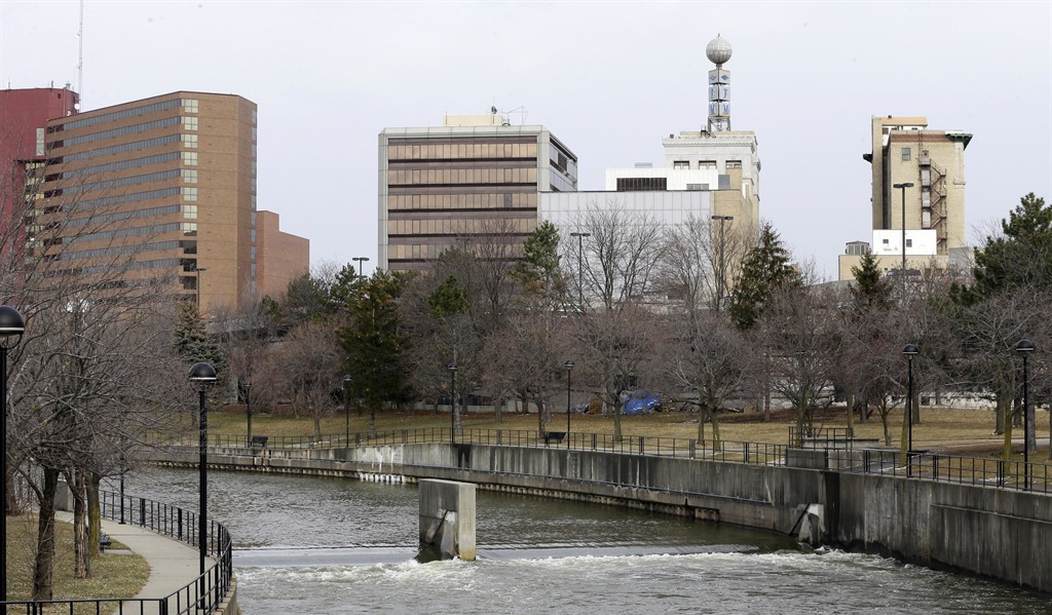This being a presidential election year, much debate remains over who is responsible for the water crisis in Flint, Mich. Democrats point to the Republican governor. Republicans point to long-entrenched Democratic leadership of the city.
But although there is debate over who to blame, there is none over what to blame. Everyone agrees the decision to switch from the Detroit water system to drawing its own water from the Flint River was disastrous for the city. Corners were cut, short-term savings were valued over long-term safety, and materials were used that were not capable of keeping the water safe.
Now, the city and state are trying to deal with the crisis of dangerous drinking water on an extremely limited budget, and the temptation is there to make the same mistake again.
Complicating matters is the fact that Walter Wang, CEO of JM Eagle, a California-based manufacturer of polyvinyl chloride or PVC pipes, offered in February to replace for free all the pipes that leaked in Flint with PVC piping.
When Flint Mayor Karen Weaver announced all the bids she has received to fix the problem came in too high, the pressure increased. State lawmakers, especially Rep. Joseph Graves, R-Argentine Township, are urging her to accept the free piping.
“This is a generous offer that will save millions of dollars – taxpayer dollars across the state – and provide the city safe, clean water for decades to come,” Graves said in a statement.
But will the offer save Flint money? Weaver is not sure. She said engineers she has consulted raised “concerns about the lifespan of the plastic pipes due to the harsh weather conditions we experience in Michigan,” and the city is doing further research.
Recommended
“We are committed to proceeding with our effort to replace the city’s lead-tainted pipes using the most safe, durable and cost-effective products and materials,” she said in a statement.
In other words, she has recognized that although PVC piping may be cheaper – or even free upfront – the long-term costs of having to replace this expensive-but-utterly-unglamorous infrastructure can be devastating.
One of the state’s flagship universities has stepped into help, and its findings seem to confirm Weaver’s concerns. Researchers at the University of Michigan in nearby Ann Arbor have developed a tool to help policymakers in Flint and elsewhere determine what materials make the most sense for their water infrastructure.
The tool, known as the Life Cycle Cost Assessment, or LCCA, was developed by three professors at the university’s Department of Civil and Environmental Engineering. It analyzes soil types, weather conditions and other factors to determine, among other things, which kinds of piping would work best for any given community.
And for Flint, the model shows the answer is not to accept the free piping from the California firm – the genuine concern expressed by the CEO notwithstanding. The answer is to pursue Ductile Iron Pipe, which “tends to be more cost effective” and more “environmentally sustainable over its service life,” according to the professors.
Ductile Iron Pipe has been used safely in U.S. water systems for more than 100 years. And unlike PVC piping – which has had famous flameouts not only in Flint but elsewhere, including in San Antonio, Texas, which had to rip up its entire system in the 1980s because of massive problems associated with PVC piping not being right for the soil there – Ductile Iron Pipe has performed well even in some of the world’s toughest environments.
And although it may be more expensive upfront, the professors say Ductile Iron Pipe probably will save Flint money in the long haul. That’s because the tool weighs not just the purchase cost of the piping but the effects on cost of different pipe sizes, flows and locations.
“It is important to consider more than one factor in selecting a pipeline material,” said Carol Menassa, PhD, lead researcher on the project. “With this new tool, the true value of the pipe, as an asset, can be understood, allowing for investment to be made in a good way.”
The tool found that, contrary to the claims of Rep. Graves, PVC piping has only about half the service life of Ductile Iron Pipe – 50-60 years as opposed to a century or more for iron pipes in addition to having a lower environmental impact – and that Flint’s situation calls for Ductile Iron Pipe.
Flint has not decided what to do with this information. The city never formally turned down Wang’s offer, and members of the city council can’t get that word “free” out of their minds. One says the offer needs to be “revisited.” Rep. Graves says the city seems to be OK now with getting its water through PVC piping and “there should not be” concerns about making the arrangement permanent.
But what is truly important for Flint is to get it right this time. No one disputes the need to fix the problem and to commit whatever resources are necessary to do so. The question is: Do it on the cheap now and risk coming hat in hand for public money in the all-too-near future? Or take the time and spend the money to build a system residents can count on for their children and grandchildren?

























Join the conversation as a VIP Member